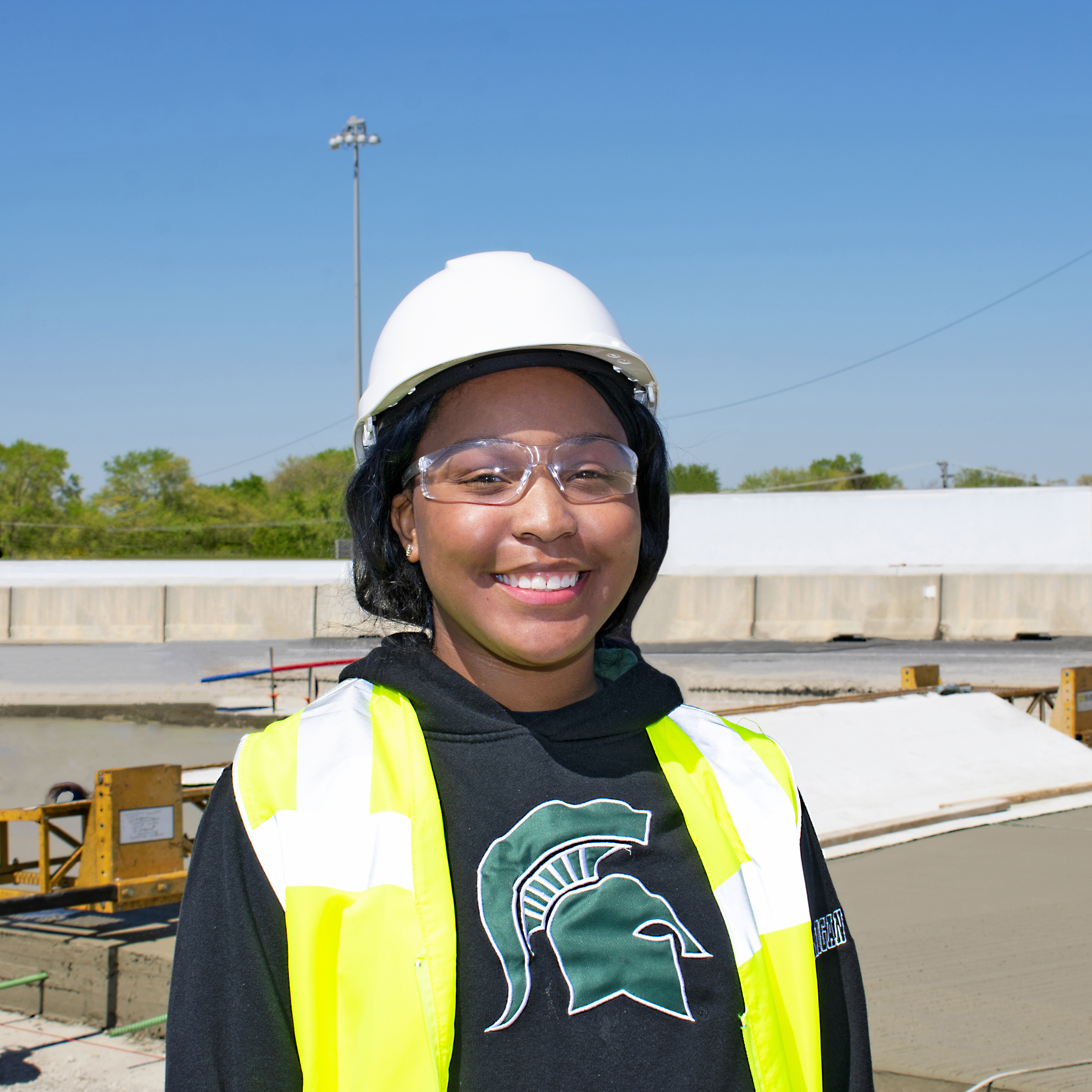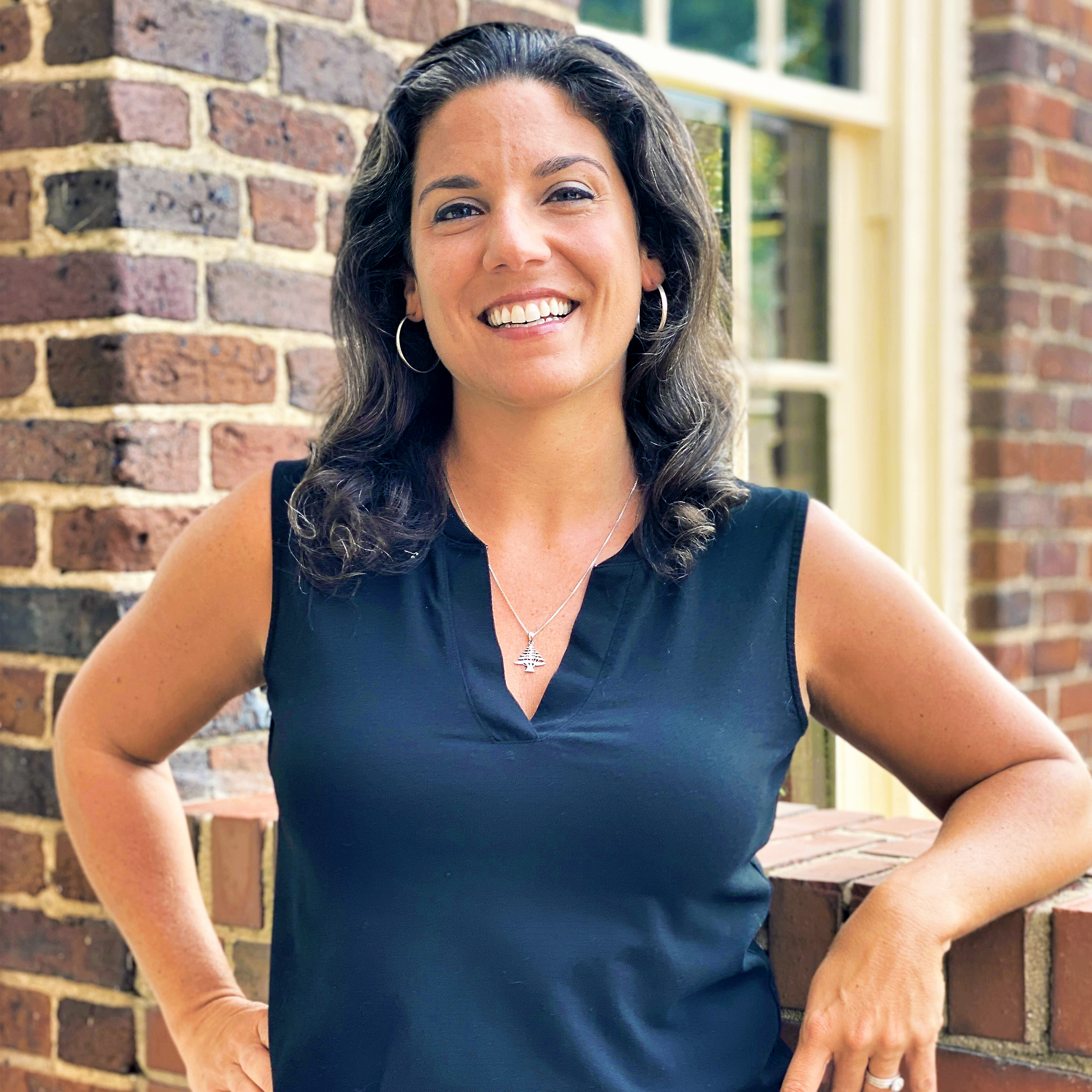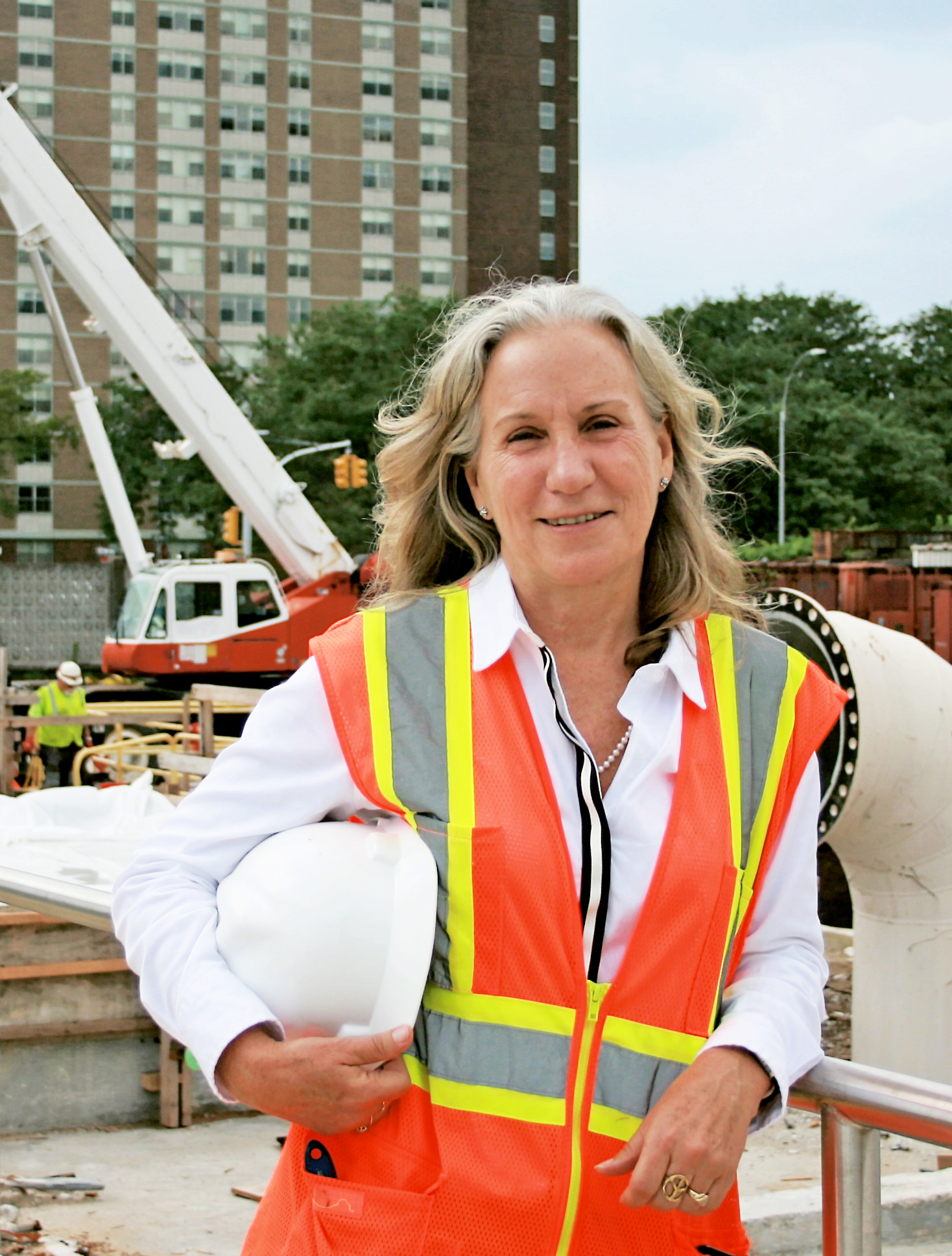3 min read
Komatsu supports reforestation at New River Gorge National Park and Preserve
- Sustainability,Blog,Social responsibility
13 min read

According to U.S. Bureau of Labor Statistics (BLS) data, women made up 10.9% of the construction industry in 2020 – a slight increase from 9% from a decade earlier. Those percentages indicate that there are far too few women overall in the industry, and that it’s a persistent issue.
The good news is that construction is a growing industry with thousands of job openings — and with the recently passed infrastructure bill expected to create even more demand — there are now ample opportunities to increase the number of women in the construction workforce.
A 2020 study by SmartAsset, a financial technology company, looked at the fastest-growing jobs for women in the U.S. and found that some women are taking advantage of the construction industry’s openings. The number of women in construction management grew by 10% between 2015 and 2019, while the construction laborer category grew by 50% and women civil engineers by nearly the same amount.
Additionally, a 2021 survey of women in construction by Levelset, a lien management and construction payments technology company recently purchased by Procore, found that approximately 80% of respondents loved their job. That’s good news for an industry that is facing a shortage of workers (particularly female ones) and can’t afford to lose them.
Kelina Evans, a third-year student at Michigan State University, is pursuing civil engineering and spent part of last year doing an internship with an architecture and engineering firm in the Chicago area.
“I planned to go into structural engineering, but I believed that civil was the better choice for me,” noted Evans, who said she loved to draw buildings during art classes in secondary school. “Designing and building are on a list of things that I really like to do. The internship reinforced that.”
 Kelina Evans, is a student pursuing a civil engineering degree
Kelina Evans, is a student pursuing a civil engineering degree
Evans learned firsthand the processes of construction, how to read blueprints and more.
“My core classes prepared me, and I saw the practical applications with the internship,” Evans pointed out. “I would like to see more women in the industry. The good thing is that I see other women pursuing civil engineering, so I’m hopeful that will be the case.”
The LevelSet survey polled 1,001 women in construction. Its data showed that approximately 53% are under the age of 45 and the largest percentage, 25%, are in office administration, followed by managers at 18%. Just nine women identified as laborers, while 96 were a president and/or CEO. In terms of how long they had been with their present employer, more than a third said a year or less. Nearly 70% of respondents said the role of women in construction is changing for the better, and about 60% said there are good opportunities.
Another bright note for women is that the construction industry has one of the lowest gender pay gaps in the nation, with women ages 16-24 earning about 95% of what men in the same age range make, according to BLS data.
Nora El-Khouri Spencer is helping women see the benefits of working in the construction industry and those high-paying jobs that come with it. She discovered several years ago there was a real shortage of women in the industry.
“I was working alongside contractors and tradespeople and realized that the number of women in the construction industry was very small,” said Spencer, founder and CEO of Hope Renovations, a Carrboro, N.C., non-profit organization that “empowers women to pursue living-wage jobs in the construction trades via our hands-on training program.” It provides skills training and support in carpentry, plumbing, electrical, painting, landscaping and more, as well as help with finding a job or continuing education. Hope Renovations is a licensed contractor, and the profits from projects are used to support the training program, along with donations.
Hope Renovations provides 10-week cohorts for women to learn through classroom and hands-on training. More than 30 women have completed the program, with about 80% going on to either pursue a job with a construction company or seek higher education. Spencer said the age range of those who have gone through the program is 20 to 62, with most being in their mid-30s to mid-40s. Approximately 50% are women of color.
 Nora El-Khouri Spencer, founder and CEO, Hope Renovations
Nora El-Khouri Spencer, founder and CEO, Hope Renovations
Spencer got interested in construction by doing her own home repairs. She worked in human resources for a home improvement company and took advantage of the employee discount to purchase power tools. She eventually started doing renovations for others.
After about 10 years, Spencer decided to pursue a master’s in social work. During an internship at a homeless shelter, she met many women whom she believed were capable of construction work.
“I was often told that nobody ever taught them how to do construction work, and that they always figured it was a man’s job,” said Spencer. “Fortunately, the perception is changing. The support we get from men in the industry and companies that help support Hope Renovations’ training program has been fantastic. They see the value women bring to the industry. We have worked together in some cases to talk about how construction jobs can be advertised to make them more open and less focused toward men. That has helped open some doors.”
While taking a class on aging in place (which refers to older adults who remain in their homes and communities as they age, rather than relocate or move into an institutional setting), Spencer learned about the construction industry’s worker shortage and that as older individuals left the field, they were not being replaced at the same rate. That was the genesis for Hope Renovations’ Aging-in-Place construction program.
“I wanted to help women get the skills they needed to enter construction careers, get out of low-paying jobs and narrow the gender pay gap,” recalled Spencer. “I also wanted to give seniors a dedicated workforce to complete the repairs and renovations they need to stay in their homes. Hope Renovations is a way to combine the two and, as a bonus, develop a workforce that will help employers in the trades fill their jobs and get their work done, ultimately helping our economy. It’s a win-win-win.”
The National Association of Women in Construction (NAWIC) created and hosts Women in Construction Week (WIC) annually. It’s an event that celebrates women’s contributions to building our nation, and will be held this year, March 6-12, 2022.
“Studies show that companies where women have prominent roles do better than those that don’t, and we want to emphasize that,” said NAWIC President Doreen Bartoldus, who is also a professional engineer in New York City, and does construction management and business development for the global firm Jacobs Engineering Group Inc. “Companies are making that connection and actively recruiting women because the data confirms the benefits.”
A May 2020 report from global management consulting firm McKinsey & Company found that companies whose executive ranks were more than 30% female were more likely to outperform companies where the number of women executives ranged from 10%- 30%.
“Women are half the overall population in the U.S., but only 10% of the construction population, and that’s something we are pushing to change,” said Bartoldus. “We need more in the field, and our organization and others are promoting that by developing materials designed to get kids at all grade levels excited about construction. We have programs that are female-specific for high school girls where they can see and touch tools, and we see that changing attitudes. We are also committed to diversity and inclusion in general and are pushing efforts to really promote those.”
 Doreen Bartoldus, president, National Association of Women in Construction (NAWIC)
Doreen Bartoldus, president, National Association of Women in Construction (NAWIC)
Bartoldus has been adamant about promoting construction to women throughout her 44 years in the industry. She grew up around it because her grandfather, uncles and father were builders around Franklin Square, N.Y. At the age of 10, she helped mix the cement for the construction of the house her father built for their family.
“I was one of six children, and the only one that pursued a career in the industry,” Bartoldus recalled. “In high school, I started doing drafting. After graduating, I didn’t go to college right away. Over the years, I worked for contractors doing surveying and drafting — anything I could that didn’t take a formal education. Eventually, I went to school at night and earned a civil engineering degree. I have since taught construction-related curriculum as an adjunct professor and networked with other educators who are doing the same.”
Bartoldus has also mentored women. “I have always loved the creative process of construction and being able to see plans turned into a finished product, and I want other women to have that same experience. We still face issues, for sure, but there has been a big shift in attitudes and perceptions overall within the past few years, and I think you will see the percentage of women increase quite significantly during the next decade.”
Iris Farley, senior human resources director for Komatsu who has been certified as a diversity professional by the National Diversity Council, said the stereotypes that have held women back from entering the construction industry are breaking down.
“The data is there to make the business case for women, as well as for diversity in general,” said Farley. “We need to make sure that anyone who comes to us and is interested in a job has the opportunity, if they are qualified or can be trained to do it.”
Connie Matson has been “playing in the dirt” for as long as she can remember. She is the third generation in her family to be part of an excavation company and today, along with her husband Scott, co-owns Matson Trucking & Excavating Inc., based in Whitefish, Mont.
“My grandfather had an excavation business and my parents followed suit,” said Matson. “In kindergarten, when we went half days, we would spend the other half riding in the dump truck with our mom. As we got older, my sister and I were laborers. Eventually, I started running skid steers and dozers and helping put in rock walls.”
Matson then decided to pursue a career as a dental hygienist and worked part time while she and Scott were building Matson Trucking & Excavating. About two years ago, she quit to focus solely on the company.
In 2006, she and Scott started the business as a trucking company with the goal that they would eventually add earthmoving services. They achieved that goal within five years and currently offer everything from clearing to backfilling and finish grading with a staff of about 15.
Connie now spends a good deal of time doing bookwork and helping repair and maintain equipment in Matson Trucking & Excavating’s shop, but she is occasionally on-site helping when needed, including running equipment.
“We had grown the company to a point that it was necessary for me to be involved full time,” Matson said. “I love being outdoors and that no two days are ever the same. I think that’s appealing. I encourage women to pursue construction as a career, whether it’s in the field or in the office. It’s a great industry.”
Construction was not a consideration for Marquisha Williams growing up. She came into the industry 18 years ago as a flagger for a paving firm that she had been cleaning offices for.
“One day the receptionist asked me if I was interested in a job. I was also running a temp service and I knew both jobs were winding down, so I took her up on the offer,” recalled Williams. “Within a year, I moved up to quality control, including testing asphalt density.”
About eight years ago, she joined Milestone Contractors. For the last four years she has been the Indiana-based construction company’s safety representative. Williams was recently appointed to the board of trustees for Women of Asphalt, a non-profit organization that “works to increase awareness of opportunities in the industry, elevate knowledge through education and resources, and provide platforms to create supportive relationships and growth.”
“The one thing I would like to accomplish is to encourage women that even if you are told, ‘no,’ to never get discouraged and give up,” said Williams at the time of her appointment. “Never water yourself down and fit a certain group of people. Your authentic self is what gets you further in this industry.
“My favorite part of the construction industry is still being outdoors, particularly when I’m on a job site and see children watching us work,” Williams added. “It’s really special when I see little girls and the light in their eyes when they see me. They’re curious, and oftentimes, I’ll hear them say, ‘I didn’t know a woman worked here.’ I try to talk to them and encourage them to think about construction as a career.”
It’s a message she definitely wants girls and young women to hear, especially African American women like her. Williams said she didn’t find a lot of support like that when she first started in the industry, but that has since changed.
Levelset’s survey data showed that may be true industrywide, as about 80% of respondents agreed that their coworkers are respectful toward women; their opinions, ideas and suggestions are genuinely considered; and people in leadership encourage respect toward women.
“I often was told that I didn’t belong,” Williams attested. “Over the years, that became less and less. The real beauty is that most men are now allies for bringing women into construction. They are encouraging us to be part of the team. That shift in attitude, along with educating kids about the rewards of construction, could be key to the industry’s long-term future.”
Williams said the industry needs to be intentional about promoting itself to women, as well as others who might not have considered construction as a career.
“I like to say that we are all sponges, and when we get ready to retire, we need to wring that sponge out and let the knowledge pour out onto the next generation. That really applies to construction and educating others about the opportunities,” Williams emphasized. “We have to go into communities and schools with high minority populations and get them interested. If we do that, I’m confident that not only the overall percentage of women will go up, but they will also go up for African American women and people of color in general.”
Komatsu is dedicated to promoting gender inclusivity in its workforce. Read more about women in engineering at our company.